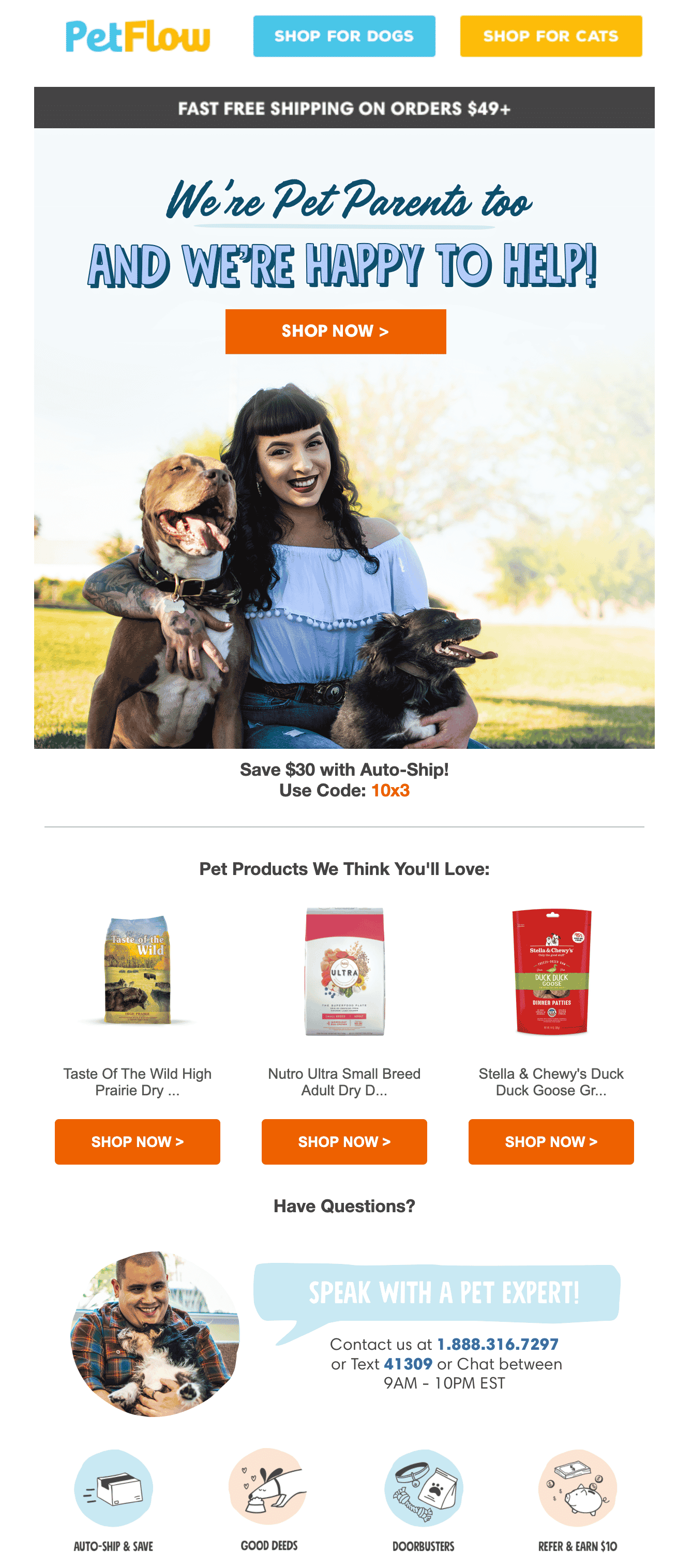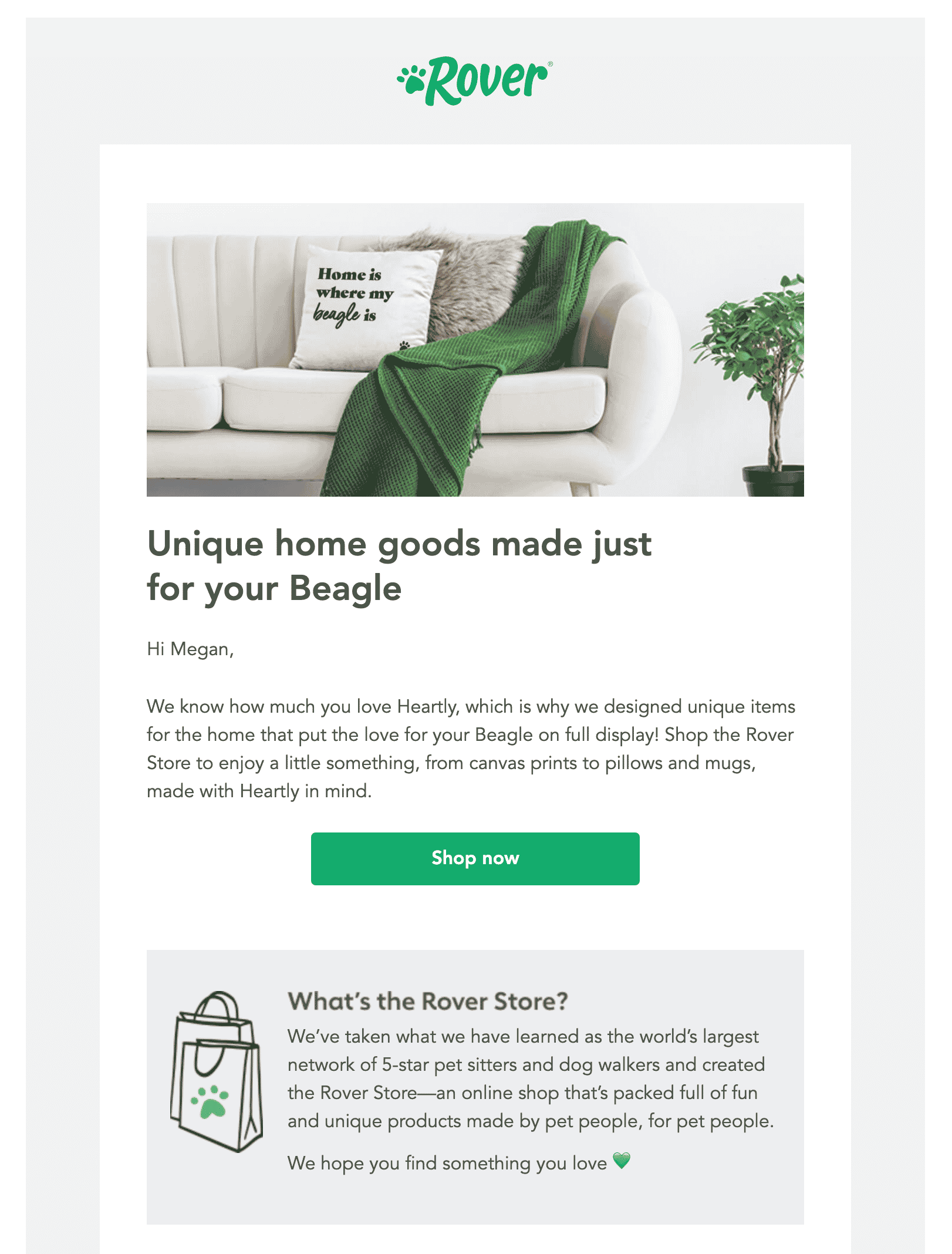Personalization
Why Personalization Is Exceptionally Important for Pet Retailers
January 27, 2021

While the pandemic has made it necessary for many businesses to scale back, pet retailers are actually seeing a surge of interest from those who have adopted pets for a bit of company. According to MediaRadar, ad spending for pet-centric brands has jumped 51% in the second quarter of 2020. In fact, the top five pet food companies in America have spent a combined total of $185 million to promote their products this year.
New pet parents need supplies, but they don’t always know what they need. Between that and the resultant boom in ad spend, the market to earn customer attention crowded. In order to help customers differentiate between a sea of similar products, pet retailers have to make sure their pet marketing is more personalized than ever before.
How Pet Retailers Can Use Customer Data to Stand Out
To send the right message to the right pet parent, PetFlow ensures customers’ meaningful actions on the site are duly recorded and used in future messaging. If you click a category or brand link in a PetFlow email, the URL parameter adds interest data to your profile. Whether you click ‘shop dog’ or ‘shop cat’ says a lot about your future buying behavior. Savvy pet retailers know how to capitalize on that.

After receiving those signals from customers, PetFlow includes them in all future communications. For example, PetFlow’s “Sunday Campaign” emails are personalized based on previous purchases. This reminds customers exactly which products previously caught their attention. The brand also uses that opportunity to promote its auto-ship option, which helps members save money on products they purchase regularly anyway.
The Different Needs of Different Pet Owners
Of course the pet supply and care needs differ greatly for bird people and cat people. But even pet owners who seem superficially alike, such as dog owners, have very different needs. A dog lover with a mastiff will need differently formulated food — and much more of it — than someone with a tiny maltipoo.
Rover understands this and even segments its email communications based on the different dog breeds people own. This summer, Rover also ramped up its Facebook marketing with personalized messaging targeted at audiences who might be likely to need pet sitting services while traveling. “By leveraging travel intent across our campaigns and pinpointing those people, we were able to scale efficiently and acquire new customers,” Matthew Maybeck, Rover’s growth marketing manager, recently told Facebook.

Personalization Means Major Benefits
Personalization matters to all retailers; 43% of consumers even say it’s critical that ads are personalized. Even more will happily trade their data for personalized product recommendations.
But personalization is even more crucial for pet retailers. For one, people think of their pets as part of the family. Additionally, certain animals and breeds have highly specific needs. For example, many dogs are allergic to chicken, grain, or both. Meanwhile, older cats often develop serious kidney and urinary tract issues requiring a special diet and care. Sending a customer with a kitten an ad for urinary tract supplements or the owner of a chicken-intolerant dog a coupon for chicken and rice formula food is simply wasted marketing spend. Understanding a pet owners’ specific needs is one of the fastest ways to create a customer and build a lifetime of brand loyalty.
The State of Brand Loyalty in the U.S. in 2023
Related



